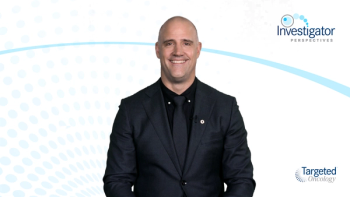
A 74-Year-Old Patient Newly Diagnosed with BPDCN
An expert discusses how the diagnosis and management of blastic plasmacytoid dendritic cell neoplasm (BPDCN) require careful recognition of characteristic dermatologic and hematologic features, with tagraxofusp as frontline therapy and vigilant monitoring for central nervous system (CNS) involvement and treatment-related toxicities to guide a multidisciplinary care approach.
Episodes in this series

Summary for Physicians: Case Overview– –Diagnosis and Management of BPDCN
Presentation and History: An elderly patient from an assisted living facility presented with fatigue, purpuric lesions on the chest, headaches, and dyspnea. Medical history includes well-controlled hypertension and coronary artery disease (post stenting in 2018). No family support available.
Physical Exam and Laboratory Findings:
- Dermatologic: Multiple purpuric nodules (2-5 cm), some ulcerated
- Hematologic: Pallor, petechiae, mild lymphadenopathy, no hepatosplenomegaly
- Complete blood count: Elevated white blood cells (15.6 x 10³/μL), anemia (hemoglobin, 8.2 g/dL), thrombocytopenia (47 x 10³/μL)
- Differential: 18% blasts, 14% monocytes; absolute neutrophil count, 0.82 x 10³/μL
- Smear: Blasts with large/irregular nuclei, grey-blue cytoplasm, no Auer rods
- ECOG performance status: 1
Diagnostic Workup:
- Bone marrow biopsy: 70% blasts
- Immunophenotyping: CD4+, CD56+, CD123+, CD303+, TCL1+; negative for lineage-specific markers
- PET-CT: Mild nodal activity, no significant hepatosplenomegaly
- Lumbar puncture: 12% blasts in cerebral spinal fluid (CSF), CD123+ by flow cytometry
- Diagnosis: BPDCN
Treatment:
- Initiated on tagraxofusp (12 mcg/kg, days 1-5 of a 21-day cycle)
- Close monitoring for capillary leak syndrome (CLS) and liver function
- Disease reassessed every 6 cycles
Summary: This case highlights the importance of recognizing dermatologic and hematologic findings in BPDCN. Tagraxofusp remains the frontline treatment in suitable patients, with close monitoring for CLS and other toxicities. CNS involvement, confirmed by CSF analysis, supports the aggressive nature of the disease, underscoring the need for a comprehensive, multidisciplinary approach.










































